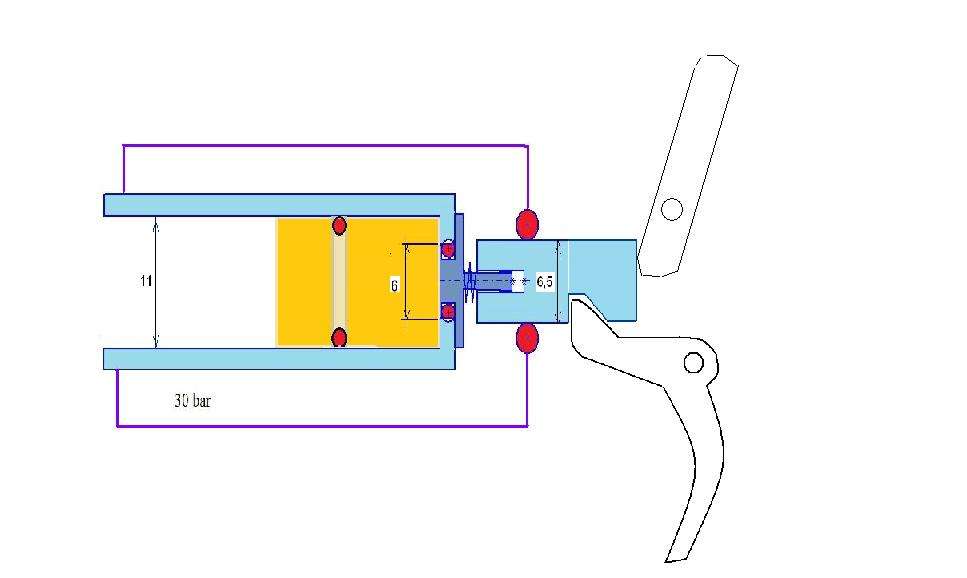The valve plug is pulled open by the trigger movement, so I assume the speed of the valve opening partly depends on how quickly you pull the trigger back. However the valve plug can open without moving the trigger, as in when you muzzle load the gun with the spear and the air then being pushed by the sliding piston transfers from the inner barrel back through the releasing valve into the outer reservoir after forcing the valve plug open. The longitudinal pin operated by the two linked trigger levers is in two sections, the inner pin has a head on the rear end so that as it moves slightly up and down with the crank rotation the outer pin can still push on it. This head can be seen on the schematic diagram positioned above and slightly to the right of the trigger pivot pin. If the inner pin moves forwards as the valve plug opens then the trigger does not necessarily move as the outer pin is always biased by the compressed air pressure inside the gun trying to blow that pin out of the gun and away from any contact with the head on the rear of the inner pin.
The actual air flow in the gun transfers from either side of the valve plug via two large slots in the moulded nylon valve housing that provides both the locating bore for the valve plug's operating stroke and part of the support structure for the inner parts of the trigger mechanism. These side windows, or slots, are not shown on the schematic diagram which is simply a cross-section taken through the gun's central axis. The forward edges of these two slots line up just rearwards of the releasing valve seat, so you can see the valve seat "O" ring by looking through them with the nylon housing removed from the gun. The compressed air rapidly flowing transversely and inwards through these two side slots may serve to help push the valve plug back, causing it to open quicker than with just the trigger moving it back, there is no way to check on it as the trigger doesn't convey any feedback on what is happening once the two longitudinal pin sections stop connecting.
The GSD "Dynamic" gun has a 14 mm ID inner barrel, as does the "Katiuscia". The latter has a rear power dial which controls a variable throttle located inside the inner barrel, positioned forwards of the releasing valve position, so any variation in firing power is not controlled by the degree of opening of the trigger operated valve, which was a big surprise when I first examined one of these more complicated guns. The bore of the valve opening I will have to measure on a "Katiuscia", my "Dynamic" is fully assembled even though it is not working, but the "Katiuscia" is in pieces somewhere and still has its original "O" ring, which sets the bore size, it being the valve seat. With this "O" ring damaged the entire nylon moulding has to be replaced as it is one integrated assembly and forms the inner guts of the gun, without it the gun is out of action as everything depends on it.
I remember that the valve hole is smaller than the inner barrel ID as cracking open the releasing valve would be too much on a 14 mm inner barrel, even with the leverage of the trigger mechanism, if that valve hole was 14 mm in diameter! That smaller bore hole will throttle the gun, but by how much I don't know. Comparisons between guns are difficult as the GSD guns shot a 9 mm shaft with a 14 mm barrel offering a claimed 15% (196/169 = 1.159) more force than an equivalent 13 mm barrel. There were no 11 mm inner barrels in pneumatic spearguns in the seventies, which is when the GSD spearguns first appeared here. At about double the price of anything else they were not that popular.







